Kellie’s Castle may well be one of Perak, Malaysia’s more unusual sightseeing venues and rightly so. The mystery, intrigue, romance and ghost sightings associated with the castle have certainly been enough to pique my own interest over the years. Well, good things come to those who finally make good on their travel procrastinations. After years of talking about going there, I can now say I have been. Perak was in fact my last travel destination just prior to the Covid-19 inspired Movement Control Order put forth by Malaysia’s government in March 2020.
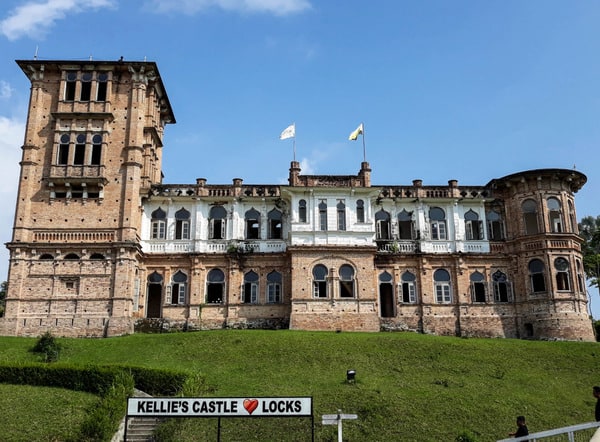
Was Kellie’s Castle everything I had expected? No. Not even close.
I had already read various versions of the Kellie’s Castle story, online, but combined with the real-life visuals of the castle itself, some things just didn’t add up. The contradicting timelines consistently recreated by an assortment of media talents, also made things a bit more puzzling and mysterious.
As I stood there gazing at a wall plaque mentioning the ‘imported Italian marble’ of the now dilapidated kitchen, I couldn’t help but imagine William Kellie-Smith as a colonialist poser with an unflattering need to impress others. And why indeed would someone who had access to Perak’s own marble quarries feel the need to import marble from another country or even pretend to?
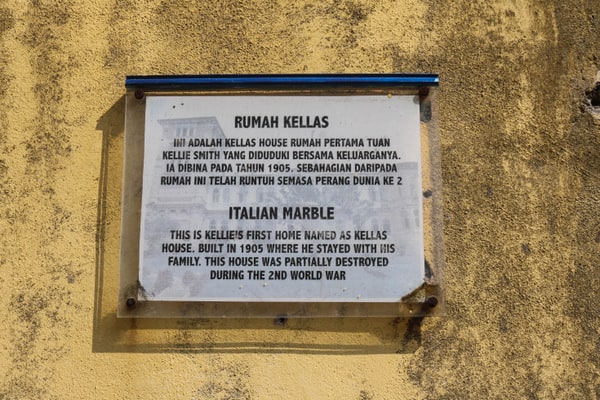
I immediately didn’t like the man. And I wondered if others had felt the same.
And what about the little missus? What had an apparent heiress seen in this stranger? I’ve read two accounts of that coupling; one is that the beloved Agnes was William’s sweetheart back in Scotland. Another more probable account is that Agnes, a ‘Liverpool cotton heiress’, met William quite by chance on her way to Penang.
He must have certainly swept her off her feet as they were married and had a child within a year. Now isn’t that a bit fast? Especially if one is an heiress coming into a large sum of money in the next few years? Agnes was so smitten that she high tailed it to the jungles of Batu Gajah with Prince Charming, as soon as they hit port? Who is to say what lines he fed her, or her him…but I smell a fish.
I decided to dig a little further into this puzzling tale and try to get a better picture.
Malaya or Bust
William Smith was born in 1870 in Kellas, Moray Firth, Scotland towards the end of the Golden Age of the British Empire. William was born on a farm; the third of five children. His family was considered ‘poor’.
Fast forward to 1890 (or 1891), the poor farm boy had managed to become a civil engineer and was adventurous enough to take advantage of the British Empire’s new foothold in Asia. With the expanse of the British Empire into India, Burma, Sri Lanka and Malaya, a 21-year-old William headed to Malaya to seek his fortune. Batu Gajah, Perak, Malaya to be precise.
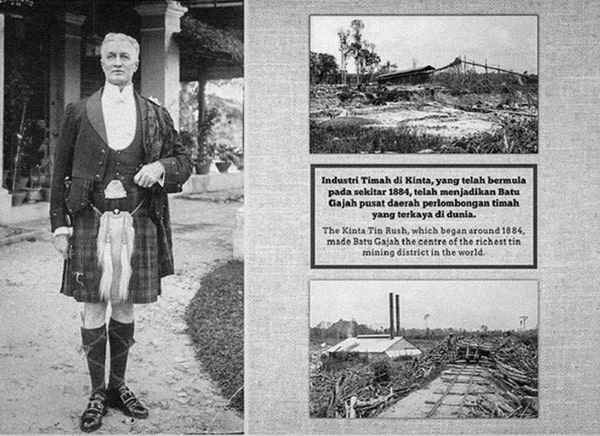
It was in Batu Gajah where William met Charles Alma Baker, an estate owner from New Zealand. Upon moving to Malaya, Baker had quickly accumulated a small fortune through a surveying monopoly in Kinta Valley and investments in tin mining and rubber. An enthusiastic William joined Baker’s survey firm, which had just won concessions from the state government to clear 890 acres of forest in Perak. He began work immediately.
Within five years, William Smith had made a chunk of change from his business dealings with Mr. Baker. In 1895 he established his own firm; William Smith, Civil Engineers, Architects and Contractors. He then bought 1000 acres of jungle-y land in the district of Kinta and started planting rubber trees. He began investing in the tin mining industry as well, which led him eventually to ownership of the Kinta Kellas Tin Dredging Company.
He also named his jungle turned rubber plantation estate, ‘Kinta Kellas’ after his family’s farm back in Scotland; Easter Kellas.
Fun fact:
Rubber trees are not an indigenous plant to Malaysia. Rubber seeds were originally brought from Kew Gardens in London into Singapore by a man named H. N. Ridley. He then brought seeds to Kuala Kangsar, Perak where the first trees were planted in 1877. Kuala Kangsar was the first rubber industry district in Malaysia and rubber went on to become an important source of income for the country up to this day.
Brief Return to Scotland
In 1903, 33-year-old William Smith returned to Scotland to visit his dying mother. At this time, he also added his mother’s maiden name to his own, becoming William Kellie-Smith. Some sources say it was out of sentiment to his mother and others mention that that the new moniker added a more elite air to the ex-farm boy’s original name. I’m inclined to believe the latter as his true intention.
William Kellie-Smith returned to Malaya in 1903, which indicates to me he didn’t spend much time with his dying mom or siblings, especially considering how long it took those transatlantic ships to get from point A to point B.
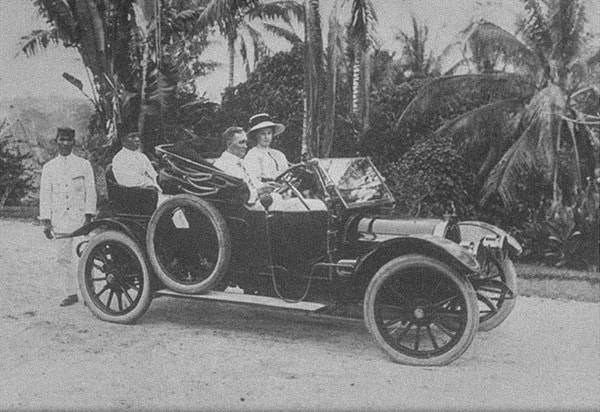
Photo credit: WHW Design
This is when he met his future bride to be; Agnes. Somehow, he had managed to stay single for his 13 years in Malaya, yet fell hook, line and sinker in love with a complete stranger whom he met on a ship? Was she really so special or was the fact that she claimed to be an heiress the real love potion?
Even more questionable is the fact that William also took out his first loan in 1904 to the tune of 24,000 Straits Dollars. He used his new bride’s (supposed) future inheritance of 300,000 as collateral. The inheritance money was not to be released to Agnes until 1906 or 1908 (for some reason).
Financial Woes
With the birth of new daughter Helen Agnes Smith and 24,000 mad money, the Smith family began the brick addition to William’s original wooden bungalow that he had named Kellas House. The new brick work became the ‘Kellas House extension’.
The money apparently didn’t last long, possibly due to William’s habit of counting his chickens before they hatch. He had multiple setbacks and financial problems. William lost a substantial amount of money trying to start a marble quarry and his own company’s concessions for mining and dredging were canceled due to inactivity and lack of capital. He even tried his hand at extracting Patchouli after building his own distillery, factory and laboratory. But all of his efforts ended up in failure.
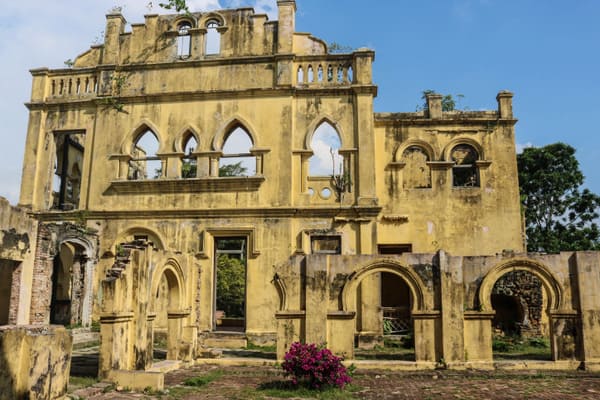
Wheeling and dealing William tried to hit the Colonial Government up for another loan but could only get 10,000 of the 50,000 he was asking for. The government was skeptical of Agnes’ inheritance. I don’t blame them; I would be too. And why the heck couldn’t the heiress’ family save them the embarrassment of asking for loans by advancing Agnes a few bucks?
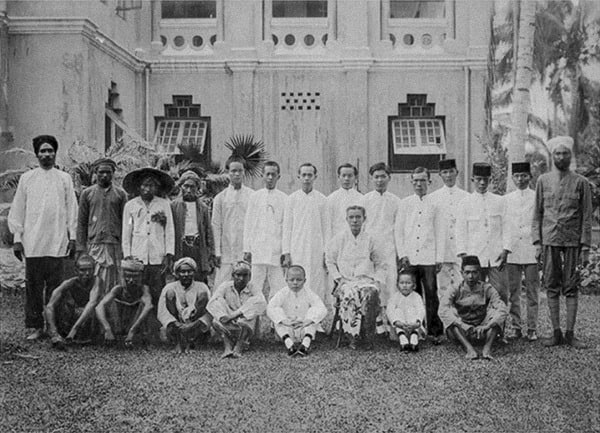
In the end, William sold two-thirds of the Kellas Estate which became Kinta Kellas Ltd, a company with William as its Managing Director. The Smith family kept the wooden bungalow and 538 acres and renamed their property the ‘Old Kellas Estate’ to keep it separate from the Kinta Kellas Ltd. parcel of land.
The Kellas House ‘extension’
The ‘Kellas House extension’ continued and finally emerged in 1909 as a brick mansion. It was later bombed during World War II (probably during the Battle of Kampar). The brick mansion basically stands in ruins today in front of Kellie’s Castle. (Which to visitors in modern times will appear as the back, because the entrance to the refurbished Kellie’s Castle entrance is presently through the back of the building). Sound confusing? It is.
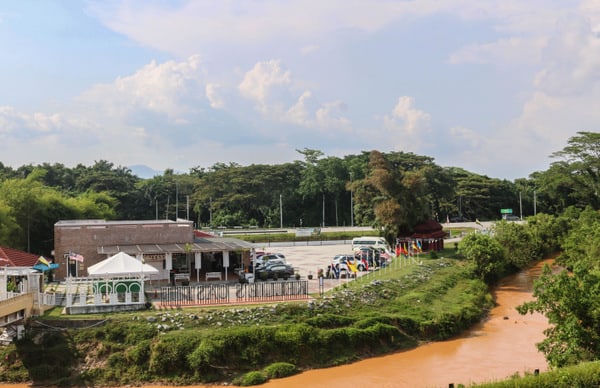
Interestingly enough, cement wasn’t available yet in Malaya when construction of the Kellas House extension began. Reportedly, bricks were pasted together using a mixture of duck egg whites, sand and chalk, brown sugar and honey. It is also reported that no nails or metal were used during this phase of the building either. Which obviously worked quite well as many of those bricks even withstood being bombed.

And in regard to William Kellie-Smith’s apparent fascination to the Hindu religion and Indian culture, I’m skeptical. This was a guy who loved money and prestige. In researching, I also found that “Indo-Saracenic Revival Architecture” was a style ‘movement’ by British architects in British India during the late 19th century.
This documented architectural style drew elements from Indo-Islamic and Indian-architecture, combined with the Gothic revival and Neo-Classical styles favored in Victorian Britain. A style that most certainly reared its influential head many times throughout developing Malaya.
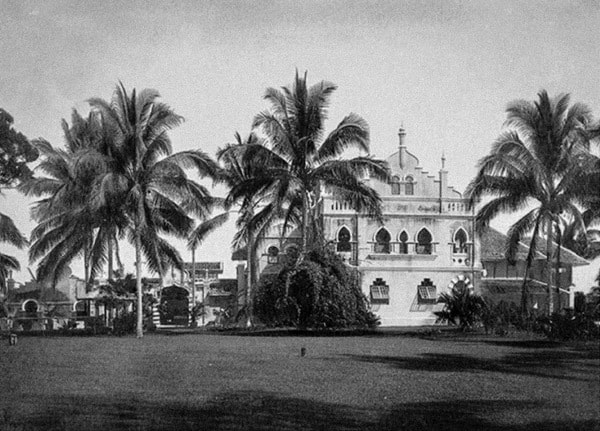
Photo credit: WHW Design
William’s eclectic architectural efforts may have appeared more unique to outsiders due to his start and stop constraints of supplies and budget. But nothing particularly unique or spiritually inspired, from my humble estimation. If anyone should get credit for various creative Hindu-esque touches, it should probably be William’s imported Indian laborers who probably had to pull a few McGyvers to get a task completed. Like perhaps duck egg bricking cement?
Kellie’s Castle (AKA Kellas House’s further extension)
By 1911, William restarted his career by forming the Klian Kellas Ltd. dredging company. He was also seeing some financial success as a rubber planter and things were looking up again. But it was 1915 and the birth of son Anthony, that visions of the future grandiose colonial mansion began filling William’s head. The humble ex-farm boy’s way of celebrating the birth of his future heir, nouveau riche-style.
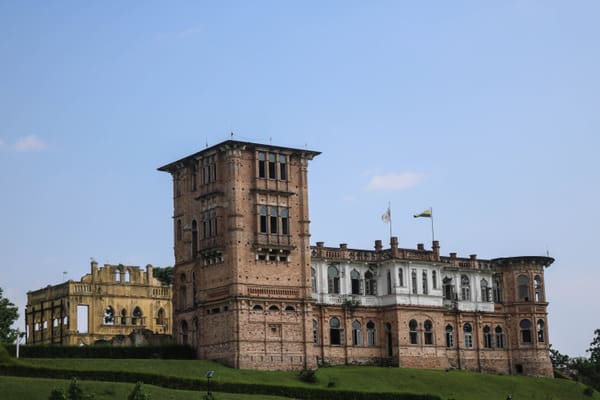
However, during the Victorian era, it was trendy for young, rich men to buy estates, old manor houses and castles to elevate their status in social circles. Likely due to the general public’s knowledge of the unfortunate ups and downs of William’s finances, ‘Kellie’s Castle’ was also referred to as Agnes’ Palace because it was his wife who fronted a large portion of the money to get the architectural dream project rolling. Ouch.
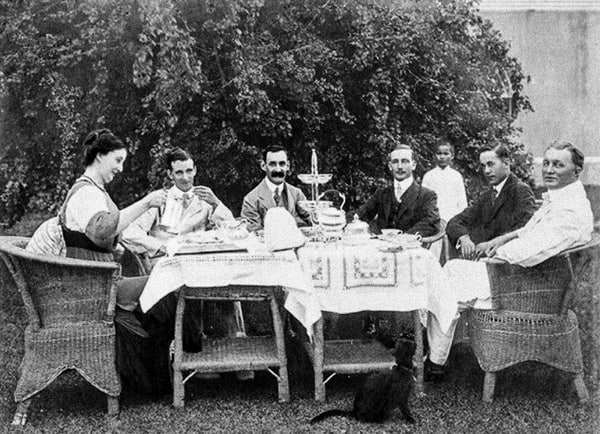
Kellie’s Castle was planned to incorporate Scottish, Moorish and Indian architectural design elements. The plan also included a 6-story tower with an elevator, an indoor tennis court and a rooftop courtyard. There was said to be a secret escape tunnel behind one of the stairways too. Which all sounds a bit over the top considering World War I was in full swing. But nevertheless William Kellie-Smith brought in 70 craftsmen and laborers from Madras, India as well as special India-made bricks and tiles.
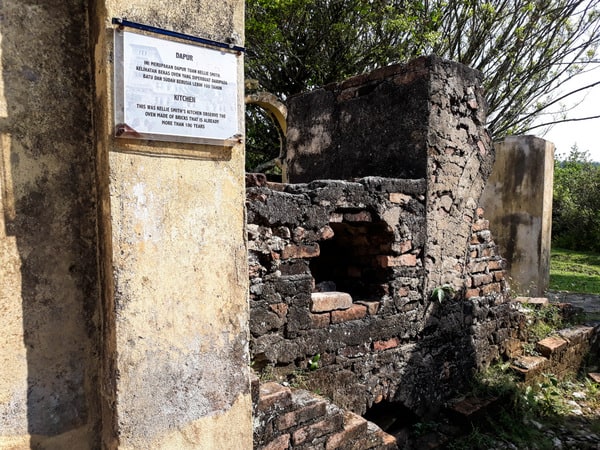
Unfortunately, in 1918, another stroke of bad luck descended on the Old Kellas Estate. Spanish Flu killed most of William’s imported work crew. Those who survived were convinced they needed protection from their gods and requested a temple to be built nearby. William obliged and the appreciative workers even added his pith-helmet wear likeness next to the other deities on the temple wall.
More Bad Luck
This is where dates get muddled again. Somewhere between 1915 and 1926, Anthony was sent to boarding school in Europe. In 1926 Anthony would have been age 11. The same year William returned to Europe with 22-year-old Helen to visit Anthony and Agnes (who escorted the boy to Europe).
William had also planned on picking up his elevator in Lisbon, Portugal, while in transit back to Malaya. Other accounts mention William went to Lisbon to negotiate a planting commission in Portuguese Timor Smith (Indonesia). Maybe he was doing both while in Lisbon. But unfortunately, William Kellie-Smith caught pneumonia and died in Lisbon in December 1926 at the age of 56.
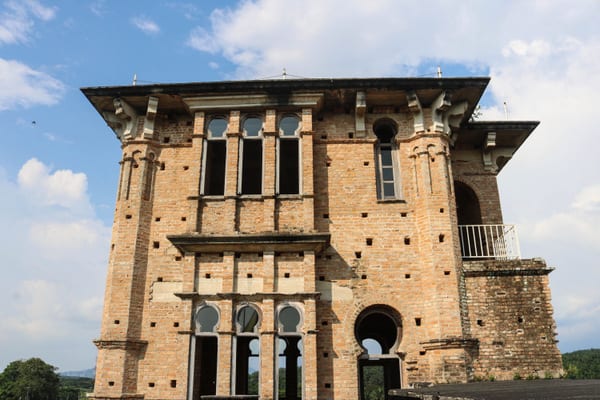
Some accounts report that Agnes and Anthony were in Batu Gajah at the time of William’s death and that the heartbroken widow packed her bags and left Malaya never to return again. Other accounts mention that Agnes was determined to complete the mansion as well as run their rubber plantation but finally gave up.
I’m inclined to believe Agnes and Anthony were in Europe.
But the end of the story is that the glorious mansion was never completed and in 1927 Agnes sold Kinta Kellas Estate in its entirety to Harrison & Crossfield, a large British trading firm. They did nothing with the property, nor did they finish the ‘castle’. With the end of colonial rule in Malaya, the property was essentially reclaimed by the jungles of Perak and remained neglected for the next eighty years.

Wow, right? Quite a story. My effort to piece together a consistent timeline of William Kellie-Smith and tale of Kellie’s Castle still leaves me with questions. But it’s been an interesting research. Now I’m especially curious about the discovery of hidden tunnels that were discovered on the estate. And the secret escape tunnel behind a staircase. Why was William Kellie-Smith so protective of his family that he would even think to add such things? What was he afraid of? Hmmm… I may never find that out. But my hunch is that it had to do with some of William’s business failings.
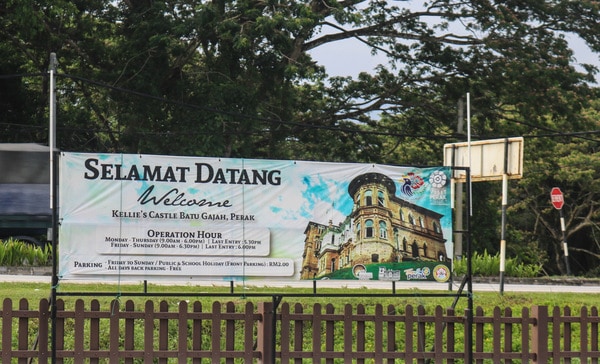
Meanwhile…
Welcome to Kellie’s Castle!
In 2000, the Malaysian government decided to refurbish the dilapidated Old Kellas Estate with an eye on a potential tourism venue. The museum conservation department restored much of Kellie’s Castle to its unfinished glory in 2012. A design team from WHW Design was brought in to create sign boards at the mansion, which they did considerable background research on. And the photos used in the signboards are authentic, thanks to a collection of old photos donated by William Kellie-Smith’s granddaughter to the Tourism Association of Perak. One room is furnished with period pieces based on some of those old family photos.
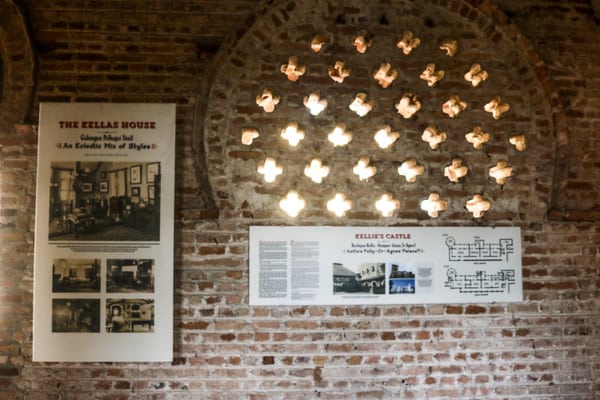
Is it worth the trip to visit this old unfinished castle previously owned by the mysterious Scotsman William Kellie-Smith? Yes. Kellie’s Castle may be much more famous than the man himself, but that’s what happens when a place is abandoned for eighty plus years. Architecture and history fans will definitely find it worthwhile. But the glimpse of the old colonial influence and control is also a gentle reminder to Malaysians of how far their country has come.
Kellie’s Castle
Jalan Gopeng, Batu Gajah
Open : Daily 0900 to 1800
Admission : Adults RM4-5/ Kids RM2-3
Tel : 05-365 1336
Batu Gajah is about a 30-minute drive from Ipoh.
There is also a train station in Batu Gajah, which is a 10-minute taxi ride from Kellie’s Castle.

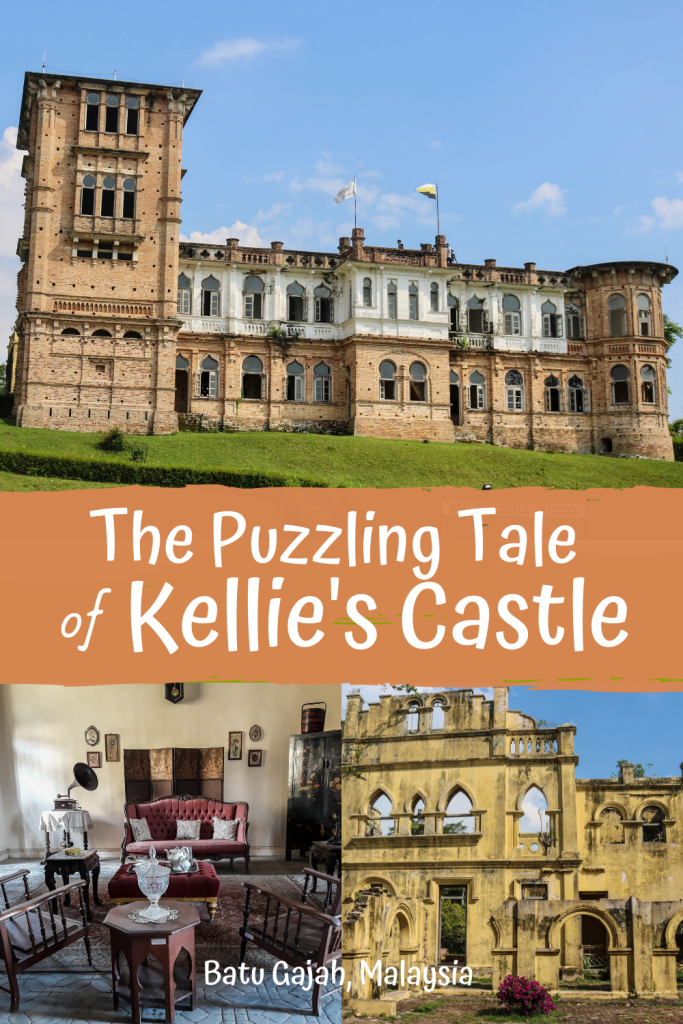
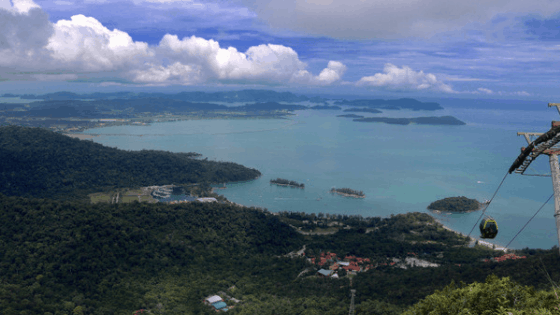
Wow! An excellent article! That must have been so interesting to research! I last visited Kellie’s Castle in 2000, before the renovations, so I will definitely have to go again.
You’re so sweet Lisa! Thanks. It was very interesting to research. I thought the duck egg thing was so weird I almost gave up finding anything about that and them bam. There is an entire science of the use of egg whites in buildings. Been done for centuries! I do wish wish I had seen photos of the castle before renovations. I only became aware of the place after the renovations when they were promoting it as a haunted house. Maybe you guys can go there on your drive back to Langkawi. Get some architectural ideas too while you’re there.
Very interesting and well research article. Good write-up, great job!
Thanks Kooi!
Hi Lisa. It is very interesting story. I read so much about it in many articles but I couldn’t find and was wondering what really happened to his daughter Helen ? Some folks or I can say it is just heresay maybe, she ran away and Agnes left fo good. I am abit curious about this. I was thinking that, she might be running away or just hiding ? Or maybe was kidnapped ?? Or murdered ?? Let me know what you think ?
Hey Mei, Helen was in her 20s when her father died (according to the many sources). The reprints of the old photos in this blog post came from William’s grandaughter. Anthony was killed in WW2 so the ‘granddaughter’ must have been Helen’s child? But I also was unable to find anything more about their life after Malaya. I can’t even imagine why her and the kids even went back after William’s death. But I also wonder why Anthony (age 11 or so) was sent to boarding school in England when Perak had boarding schools. There are definitely some missing pieces to the puzzle.
Lovely written. We are on the way to see Kellie’s castle.
Thank you! Have a great time, well worth the trip. :)
Just back from Kellie’s Castle. I think u are right, something fishy on his wife, Agnes, eagerly sold the land after her husband died without even check on the Castle that was purely built for her🥹
Right? :D I’m so glad you suspect too, because I was wondering if maybe my imagination too much. :P
Enjoyable but your tearing down Kellie-Smith was a bit much, no? Yes, he was likely a typical, arrogant British subject made rich by colonialism and a schmuck to boot but… “I immediately didn’t like the man”, “He must have certainly swept her off her feet as they were married and had a child within a year. Now isn’t that a bit fast? Especially if one is an heiress coming into a large sum of money in the next few years? Agnes was so smitten that she high tailed it to the jungles of Batu Gajah with Prince Charming, as soon as they hit port? Who is to say what lines he fed her, or her him…but I smell a fish.”, “In 1903, 33-year-old William Smith returned to Scotland to visit his dying mother. At this time, he also added his mother’s maiden name to his own, becoming William Kellie-Smith. Some sources say it was out of sentiment to his mother and others mention that that the new moniker added a more elite air to the ex-farm boy’s original name”, “Was she really so special or was the fact that she claimed to be an heiress the real love potion? And truly, I hate to sound like a prude, but they met, were married and had a child within a year? Hmmm….”. Yeah, hmm. That sound you hear is the benefit of doubt flying out the window. We don’t know for certain what anything resembling the truth might have been in any of those cases?
Continuing: “Even more questionable is the fact that William also took out his first loan in 1904 to the tune of 24,000 Straits Dollars. He used his new bride’s (supposed) future inheritance of 300,000 as collateral. The inheritance money was not to be released to Agnes until 1906 or 1908”, “The money apparently didn’t last long, possibly due to William’s habit of counting his chickens before they hatch”, “Wheeling and dealing William tried to hit the Colonial Government up for another loan but could only get 10,000 of the 50,000 he was asking for. The government was skeptical of Agnes’ inheritance. I don’t blame them; I would be too”, “And in regard to William Kellie-Smith’s apparent fascination to the Hindu religion and Indian culture, I’m skeptical”, “William’s eclectic architectural efforts may have appeared more unique to outsiders due to his start and stop constraints of supplies and budget. But nothing particularly unique or spiritually inspired”, “If anyone should get credit for various creative Hindu-esque touches, it should probably be William’s imported Indian laborers” – that last assertion I have less trouble with, if it were taken in isolation.
Look, I neither like nor admire the man you portrayed but just wow on the complete trashing of a pretentious colonial. It would have be nice to subtly lay out what is know and let the reader draw conclusions, versus putting not your finger on the scale but pouncing on it with both feet. Perhaps a man of so low esteem in your eyes did not merit writing about?
Yes, it is a puzzling tale. Thanks for the critique. :)